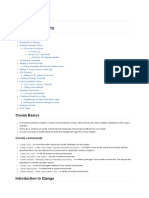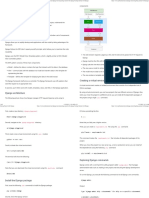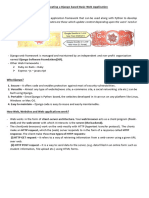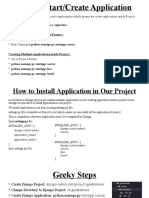0% found this document useful (0 votes)
30 views2 pagesDjango Project Creation
This document outlines the steps to create a Django project using PyCharm, including installing Django, creating a project and an app, and verifying the setup. It also provides recommended changes to the settings.py and urls.py files to properly configure the Django project. Finally, it details the expected directory structure after project creation.
Uploaded by
SureshCopyright
© © All Rights Reserved
We take content rights seriously. If you suspect this is your content, claim it here.
Available Formats
Download as TXT, PDF, TXT or read online on Scribd
0% found this document useful (0 votes)
30 views2 pagesDjango Project Creation
This document outlines the steps to create a Django project using PyCharm, including installing Django, creating a project and an app, and verifying the setup. It also provides recommended changes to the settings.py and urls.py files to properly configure the Django project. Finally, it details the expected directory structure after project creation.
Uploaded by
SureshCopyright
© © All Rights Reserved
We take content rights seriously. If you suspect this is your content, claim it here.
Available Formats
Download as TXT, PDF, TXT or read online on Scribd
/ 2













































































